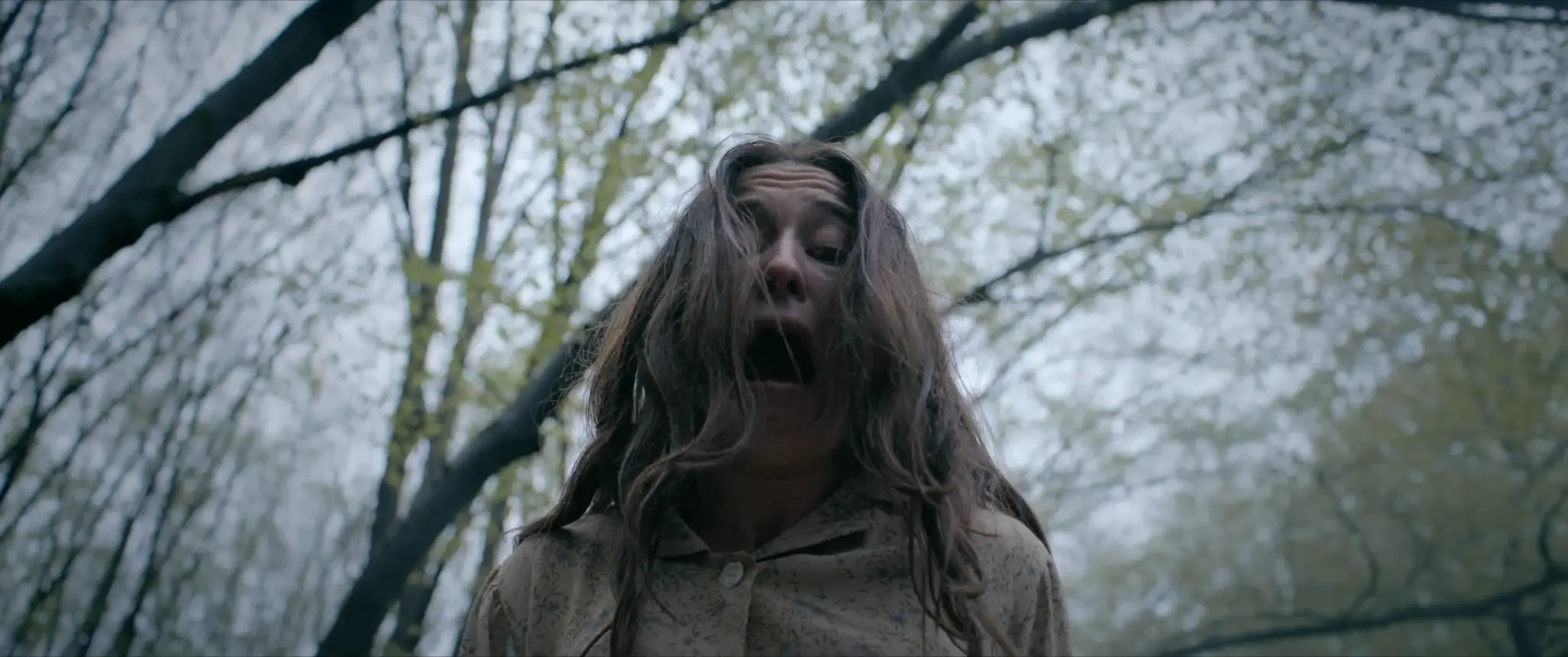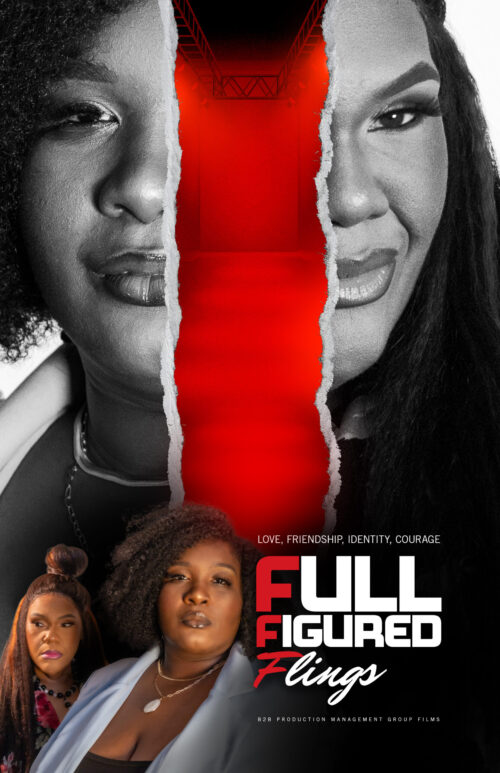We Speak Actors
Hannah Margetson on embodying the grotesque in ‘Hellboy: The Crooked Man’

Actress Hannah Margetson appears in some unforgettably creepy scenes in the new film ‘Hellboy: The Crooked Man’. In the reboot of the franchise, Hellboy discovers a remote community dominated by witches and led by a sinister demon; Hannah plays the mysterious Cora Fisher. Director Brian Taylor worked directly with Mike Mignola, the original creator of the Hellboy comics, to bring the story straight from the comic book to the screen. In a recent Business Insider article, Brian Taylor compliments Hannah’s performance, calling her “an incredible actor and just an out-of-this-world physical performer.” Hannah is also the founder and co-director of Snake Height Creative Company, which offers worldwide services in talent representation, casting, and events. Here she talks about pushing herself in grotesque scenes, supporting other artists, and “punk-rock filmmaking”…
Tell us about ‘Hellboy: The Crooked Man’ – and who would you recommend it to?
“The film is like a fever dream, loaded with hidden references that are mystical, comic, abstract, and absurd. I’d recommend it to folk horror fans who appreciate gritty, unconventional, and grotesque storytelling, especially those comic book fans who love the original characters and artworks from Mike Mignola and Christopher Golden.”

What was your experience of working on the film?
“It was profound! I dived deep into the collective unconscious, exploring Jungian symbolism.”
“I was lucky enough to work with an incredible team and the legendary Brian Taylor, whose punk-rock filmmaking methods made the experience unforgettable.”
Can you describe your character, Cora Fisher?
“Cora Fisher is a deeply complex character, and embodying her was a heart-wrenching journey. She’s been stripped of everything and treated cruelly, yet still has this innate drive to help and give. Playing her made me reflect on motherhood and the resilience women carry in such a brutal world. Cora’s journey is about survival and sacrifice, and there was something deeply cathartic in expressing a sliver of her story.”
The scene where Cora is wrapped in an ouroboros snake was intense! What was it like filming that?
“That scene was powerful in every sense. Filming it, I found myself rigged high in the forest alongside my serpent companion – it reaffirmed the meaning behind the name of our company, Snake Height, which my co-director Andreas Breilev and I chose a year earlier. Now I have this symbolic scene as proof to why I followed my intuition and trusted my creative path.“
“This movie is filled with haunting encounters, and you have to dodge witch balls and shoot some zombies along the way, but on the other side lies a world of magic.”
There’s a scene in the film where Cora’s empty skin lies on the bed – astonishingly this was created using practical effects, not CGI. What was that like to film?
“Filming that scene was truly extraordinary. The fact that we used zero CGI and relied solely on practical effects allowed me to tap into my full potential, not just as an actress but also as a movement artist. Brian’s vision for this scene made it disturbing and delightfully disgusting in all the best ways. It’s definitely a standout moment for me in the film.”

Tell us about setting up Snake Height Agency?
“To me, Snake Height means constant renewal and transformation on the creative journey. We started the company in the circus environment, as it felt instinctive to support the artistic underdog and produce experimental theatre and film with our own team. Then Snake Height represented me as an actor and helped me land this role as Cora. And with Snake Height’s CastIn’Ladders – our casting portal – launching in 2025, the company is set to expand that vision even further. I want to continue creating space for specialist artists to trust their instincts and express themselves fully. There are exciting things on the horizon, and I can’t wait to see where this journey takes us next.”
‘Hellboy: The Crooked Man’ is available to watch on Amazon Prime Video and other streaming services now.
Photo credits: Stills from the movie ‘Hellboy: The Crooked Man’, DOP Ivan Vatsov,Production company Bulgarian National Film Center, Distribution company Ketchup Entertainment
We Speak Actors
Full-Figured Flings Teaser Nears 14K Views – Director of Photography Offers Special Father’s Day Release

Back 2 the Basics Production Management Group is proud to announce the official teaser premiere for FFF: Full-Figured Flings, a bold and unapologetic new film celebrating full-figured women and challenging the norms of beauty in Hollywood. Clocking in at just 46 seconds, the teaser doesn’t waste a moment, delivering a powerful visual and emotional punch that sets the tone for a project rooted in body positivity, size inclusivity, and cultural truth.
Premiering ahead of the 20th anniversary of Phat Girlz (2006), FFF serves as both homage and evolution. The film expands the conversation around colorism, sizeism, and shapeism, spotlighting women who have often been cast aside, sidelined, or silenced.

“This teaser is more than a preview—it’s a declaration,” said Lillie Mae Jones, creator and producer. “FFF is our love letter to the women who’ve never been centered but have always been essential. We’re not just telling stories—we’re shifting the lens.”
FFF: Full-Figured Flings is currently in development as a non-union independent production, with plans to release in 2026. The film invites audiences and allies to follow, support, and amplify the message through community engagement, open casting calls, and creative collaborations—including the launch of a nationwide call for a “Big Girl Anthem” to serve as the film’s official theme song.


Accept the Challenge…
The buzz is building fast around the highly anticipated full-figured fashion experience FFF, and now there’s a challenge on the table that fans won’t want to miss.
After racking up 11,000 views in less than 10 days, the official teaser video for FFF on YouTube is quickly gaining momentum. And now, the film’s Director of Photography, Dominique Perry, has thrown down a bold offer:
“If we hit 20,000 views before Saturday, June 14th, I’ll drop an exclusive second teaser on Father’s Day.”
This is more than a film—it’s a movement. FFF is a high-fashion, high-impact visual celebration of full-figured women taking a stand for representation, inclusion, and power on and off the runway.
Here’s how you can help make it happen: Watch the teaser now on YouTube. Like, comment, and subscribe. Share it with your community and post why YOU stand in solidarity with full-figured women
Watch here for a taste of the boldness, beauty, and energy
-

 We Speak Music1 week ago
We Speak Music1 week agoSinger/Songwriter Aro Rose To Release Highly Anticipated New Single “Live Without You” On June 29th, 2025
-

 We Speak Soccer1 week ago
We Speak Soccer1 week agoFrom Small Steps to Big Goals: How Alianna-Reyne Basa Became a Fearless Striker with a Champion’s Heart
-

 We Speak Soccer1 week ago
We Speak Soccer1 week agoBrylee Tagle: Crafting Excellence on the Soccer Field with Vision, Confidence, and a Passion for the Game
-

 We Speak Volleyball1 week ago
We Speak Volleyball1 week agoEyes on the Ball, Heart in the Game: Ryan Jomo’s Volleyball Journey as a Libero Who Refused to Settle for Less

